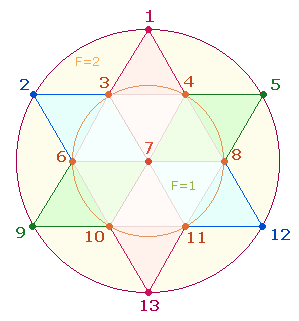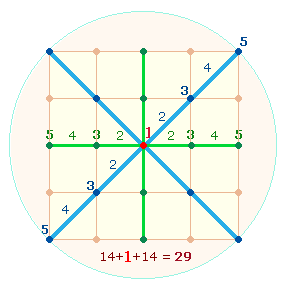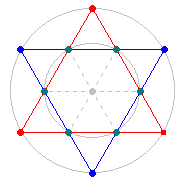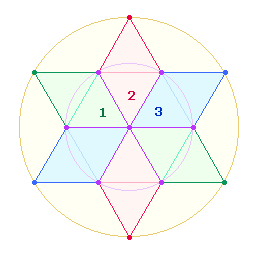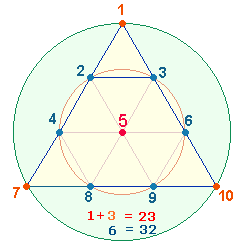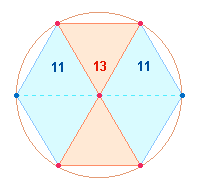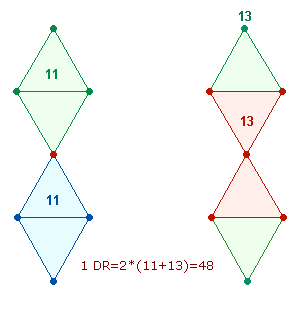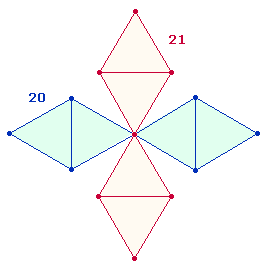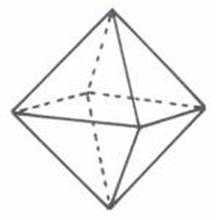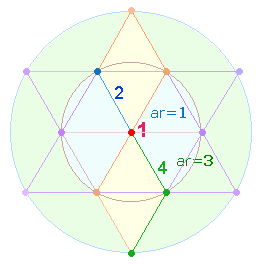back
Alphabets;gematric
calculator
Shakespeare's
and Ovid's Epitaphs
C. References to IESUS
CHRISTUS and VESTA
I.
Introduction
II. IESUS CHRISTUS in Shakespeare's
Epitaph
III.
Reference to VESTA in Ovid's Epitaph
a) Introduction
b) Reference in Ovid's Epitaph
D. VESTA and IESVS – Two Complementary Models
E. Gematric aspects of the 4 Y-Words
I. Introduction
1.
It is almost impossible to believe that the human
mind should be able to devise a gematrical construction that matches hundreds
of conditions. Furthermore, almost any result can be interpreted into some
sense at least. So justified doubts might be raised if a the author of a text
has really counted gematric values.
Perhaps there is room
for a compromise to make the impossible appear more probable: If the basic
attitude of the gematric encoder (the poet) is a religious one, part of the
endeavoured results and conditions are due to precise calculation, the rest is
divinely added.
2. The
gematric decoder's task is to give the most plausible arguments for a presumed
general or particular gematric construction. Plausibility mainly means evidence
of sufficient simultaneous conditions.
3. It's hard
enough to impute fantastic mathematical capabilities to Roman authors, but
almost beyond belief that Shakespeare should have obtained their knowledge and
kept up with their practice.
4. With
these remarks of strong skepticism in my defense, I dare to submit the
mathematical facts I found in the text, hwoever miraculous they may appear.
II. IESUS CHRISTUS in Shakespeare's Epitaph
1. If a text
is intended to refer to certain terms or names, this can best be done if the
frequency of letters contained in these words is carefully chosen so that the
total result bears some striking significance in relation to them.
2. The names
IESUS CHRISTUS consist of 8 different letters whose frequency has proved to
total the numerical sum (NS) 783. If a result for each of the two
names is intended, the number of different letters is 4+7 = 11, with one surplus S in each name dropped.
Text and frequency of letters:
|
GOOD FREND FOR IESVS SAKE FORBEARE |
|
TO DIGG THE DUST ENCLOASED HEARE |
|
BLESTE BE YE MAN YT SPARES THES STONES |
|
AND CURST BE HE YT MOVES MY BONES. |
a(7) e(21) i(2) o(9) u(4) y(4) V
47
b(5) c(2) d(6) f(3) g(3) h(4) k(1) l(2) m(3) n(6) p(1) r(7) s(14) t(9) C 66
3.
The results for the two names are:
|
|
I |
E |
S |
U |
|
C |
H |
R |
I |
S |
T |
U |
|
|
NV |
9 |
5 |
18 |
20 |
52 |
3 |
8 |
17 |
9 |
18 |
19 |
20 |
94 |
|
frequ. |
2 |
21 |
14 |
4 |
41 |
2 |
4 |
7 |
2 |
14 |
9 |
4 |
42 |
|
total |
18 |
105 |
252 |
80 |
455 |
6 |
32 |
119 |
18 |
252 |
171 |
80 |
678 |
|
455=5*91>25; 678=6*113>118; 455+678 = 1133 |
|||||||||||||
91 can be understood as
the sum of the numbers 1-13 of the tetraktys star, 113 as the sum of a 4-axial
square numbered from 1-5:
|
|
|
Both geometrical figures
are integrated in the SATOR-Square, the letters of whose four
axes have the numerical + factoral sums (FS) 452 = 4*113: The values of the 9 letters of the TENET-cross and the of the 8 letters of the
diagonals are 109+109+134+100 = 452.
The total sum 1133
= 11*103 means that the average value for the 11 different letters is 103. If read as 10+3, it refers to the 10 points of the
tetraktys and the 3 remaining points.
103 is also the numerical
value of Shakespeare, who can feel included and protected in the names IESUS
CHRISTUS.
The factoral values of 455 and 678 are 25+118 = 143 = 11*13. The sum 143 means an average value of 13 for each of the 11 letters. It is identical with the numerical value of PATER
NOSTER,
which also consists of 11 letters.
4.
The difference of 1133 and 783 is 350. This is because the two names have the three letters IUS in common:
|
|
I |
U |
S |
|
|
NV |
9 |
20 |
18 |
47 |
|
frequ. |
2 |
4 |
14 |
20 |
|
total |
18 |
80 |
252 |
350 |
IUS, the Latin word for law,
justice, reminds
us of Isaiah 42,1:
Here is my servant, whom I uphold,
my chosen one in whom I delight;
I will put my Spirit on him
and he will bring JUSTICE to the nations.
III. Reference
to VESTA
a) Introduction
1.
The goddess Vesta was worshipped in a round temple
on the Forum Romanum. The outside round of temple was furnished with 20
columns. No image of the goddess was known to be in the centre of the temple.
2.
The name VESTA is in reality composed
of the phrase V-EST-A, the letters V and A symbolizing two tetraktyses within two concentric
circles:
|
|
The values of this phrase 20+42+1 =
63 stand for 3 double-rhombi with 21 elements for each: 7 points 10 lines and 4 triangles:
|
|
3.
References to VESTA as a central gematric
model and connection to the decimal system are traceable in many poetic texts.
b) Reference in Ovid's Epitaph
1.
According to the frequency of letters, Ovid's
epitaph provides the following values:
|
|
V |
E |
S |
T |
A |
sm. |
|
Pos. |
1 |
2 |
3 |
4 |
5 |
|
|
NV |
20 |
5 |
18 |
19 |
1 |
63 |
|
frequ. |
9 |
14 |
12 |
9 |
11 |
55 |
|
|
|
70 |
216 |
|
|
|
|
total |
180 |
286 |
171 |
11 |
648 |
|
|
648 = 2*18² = 18*36 |
||||||
The findings are so
complex that they need to be explained step by step.
2.
To begin with, Ovid's epitaph contains 55 letters to match the 5 letters of VESTA. 55 is the sum of the numbers 1-10. In a numbered
tetraktys the central point is 5, and E its correspondent
letter. The numbers of the three corner points 1+7+10 add up to 18, whose equivalent letter is S:
|
|
The two letters ES – Latin verb form
meaning YOU ARE – with the NV 23 take the positions 2 and 3 in VESTA, which can be read as 23. The sum of the 6 remaining numbers is 32, inversion of 23.
The graph shows the
tetraktys within two concentric circles whose areas are to each other 3:1.
If the three corner points are to represent the outer ring area and the central
point the area of the hexagon circle, the ratio is 2:1.
On an ontological
plane, this ratio bears an obvious trinitarian connotation.
3.
On the two-digit level the lowest correlation of 1 and 3 is 11 and 13. In a hexagon two
geometrical figures consisting of 11 and 13 elements can be found
which are also constitutive of the 3 double-rhombi:
|
|
|
The number of letters for ES is 14+12 =
26. Two
double-rhombi can be combined to form a cross and put together to the shape of
an octahedron:
|
|
|
The number 14 comprises 6 corners and 8 areas of the
octahedron, 12 is the number of its edges.
The total numeric value
for these 26 is 286 = 2*11*13 or 26*11 showing an average
value of 11 per letter. The factoral value of 286 is 26, which coincides with
the 26 elements of the octahedron.
It has been known for 80 years now
that 21 out of 25 letters of the
|
|
The numeric value of
one PATER NOSTER is 143 = 11*13 with an average numeric value of 13 per letter.
If one combines the
words PATER NOSTER with the Latin form ES, an astounding religious
credo emerges: Ovid obviously confides in a personal God, whom he addresses
with "You are our father".
4. If we
determine 26 elements of the octahedron, we have neglected the
dimension of volume which has to be counted as 1. We should then make
up two calculations 26 and 27, totalling 53 as the representative
number of the octahedron. Ovid takes account of this: As the letter A with the NV 1 occurs 11 times, we can add the
values of A and ES: 11*(26+1)
= 27*11.
What remains of VESTA is the Latin pronoun TU – YOU. The two letters both
occur 9 times in the epitaph, so their total value is 9 (12+20)
= 9*39 = 27*13.
We now can form the
ratio 27*(
The frequency of the three letters
ESA is 14+12+11
= 37, which is the sum of the 7 numbered hexagon
points, after the central number 5 has been added to the sum of 32. The remaining sum of
the 3 corner points is 18.
5. The three
components of VESTA can be read as TU ES A – You are
the A,
which obviously means: You are the origin of all.
But the A can also be placed
behind the E so that the single word TUEAS – May you protect is formed.
If we now make up
composite numbers from the positions of TU and EAS in the name VESTA, we get 41+253 =
294 = 21*14. The number 294 is important because
it's also the NS+FS of IESUS
CHRISTUS: 182+112 = 294.
In fact, if we return
to the basic equation V EST A and consider that ST forms a unit to
represent the 37 elements of the tetraktys, the frequency of these three letters is 14+(12+9) = 14+21.
The two numbers have to be
interpreted as radial elements of the tetraktys star: 1+4 and 2+1 represent the ratio of
areas 3:1 of the two concentric circles:
|
|
The frequency of the
three letters EST contains an inversion of 12 to 21: 12+14 refers to the final
three-dimensional shape of the octahedron, 21+14 to the areas of the
two concentric circles.
6. Belief in
a personal God implies communication and dialogue. The verb form TUEAS is to be understood as
a prayer of a human being, God's image on earth. Man's confidence in God's help
makes him imagine that God answers effectively in return, in Latin by TU EAS – May you
go, i.e.
may you proceed on your intended way, I will support you.
Written: January 2009
